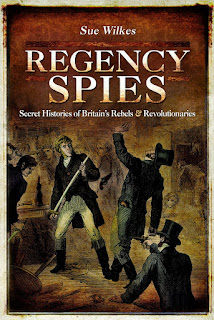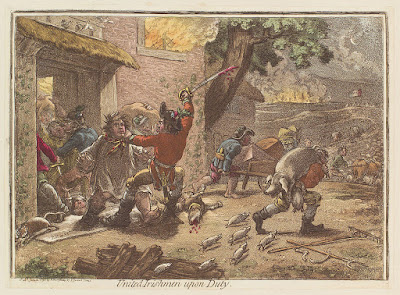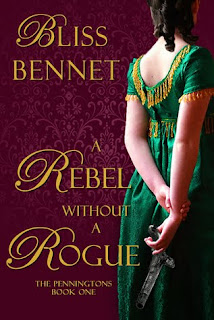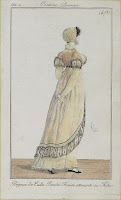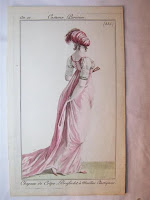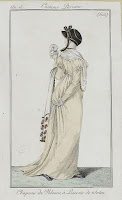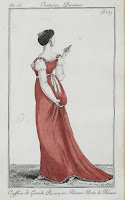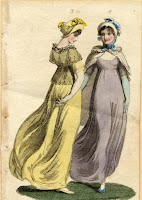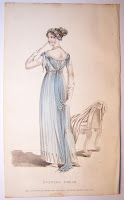I am absolutely delighted to welcome Barbara Gaskell Denvil to the salon today for a chat about writing, inspiration and her fabulous novels. Barabara has been a friend and champion of the blog from the very early days and it's a privilege to share a pot of tea with her!
---oOo---
It’s lovely to talk to you Catherine. I feel I’ve known you for years – and consider you one of the hardest working bloggers online. So thanks very much for the chance to chat.
1. Is it your love of history which inspires your writing, or is it your writing which inspires your love of history?
Each has always inspired the other. I come from a literary family and writing seemed the natural thing to do. As a child I never learned to ride a bike nor went on holidays to the beach, for all my gifts on Christmas and birthdays were automatically books, pencils, paints or pens. But then my love of history, probably first prompted by a passion for Shakespeare on stage and film, combined with the writing and seemed to bring everything to life. There are so many historical periods and charters that I find endlessly fascinating, such as the English civil war and the following Restoration, Wellington and the Napoleonic wars, the relentless march towards French self-destruction and its poor victims such as Marie Antoinette, the rise and fall of Catholic power and the many eccentric popes, the battling Italian States and the English road onwards from Feudalism towards the end of the medieval period before the Tudors. I am immensely moved by the struggle and suffering of past eras and those attempting to escape disease and injustice, and all this haunts my dreams. In particular my passion finally took me to the winding alleyways of 15th century London. That seemed to absorb me so completely, that I have based most of my historical novels in that period.
2. Is all your fiction set in the late medieval, or have you ever written anything different?
I also adore fantasy, and my latest novel, which will be published worldwide in both Kindle and paperback editions at the end of this month, is the first part of a fantasy trilogy. This book is entitled A White Horizon, and is set beyond the Arctic Circle during the 9th century. Still history then – but the plot is pure fantasy.
I have always read and adored every single genre, but the novels which have influenced me most over the years have either been historical fiction – or fantasy. Certainly that is why those are now what I write myself.
My three existing published novels are historical fiction. So now comes the fantasy...
3. Well, clearly you have a favourite time period for your writing. Do you also have favourite characters amongst your own books?
All my heroes, I’m afraid, are usually my favourite characters. And the one I love most is whichever one I’m writing at the time. I love my heroines too, but I usually identify with them – so they combine with me, and together we fall for the hero! But actually I love my minor characters and my villains too. I put so much into characterisation because I believe that is the heart and soul of every book, even more than the plot. So they all come alive to me, they move in and live with me, and are my very best friends while each book is being written.
4. Do you agree with those clichéd nuggets of advice most authors have heard a hundred times? Such as, “Write what you know”, and “Never write ten words when you could use five”
No, I think most advice given to authors is subjective, and also depends on passing fashions. I write novels with plenty of mystery, adventure, crime and danger set in the distant past and sometimes fantastical – so no – not at all the life I have lived myself. Writing ‘what I know’ would be very limiting. I suppose we all include elements of whatever we have learned and experienced in our lives, but in general I do not at all believe we should restrict ourselves to writing only what we know. I rarely enjoy the books of those writers who do. The contemporary short novels concerning people – invariably embittered women – who lead more boring lives than we do ourselves – do not interest me much.
Nor do I believe in minimalism. We all write to the length our plots demand, and I tend to write long fast-paced novels crammed with variety.
I prefer the advice offered to us by Somerset Maugham: He said, “There are only three rules for writing a novel. Unfortunately no one knows what they are.”
5. So has your own life inspired you at all? And do you live a quiet life, preferring the author’s supposedly essential isolation?
My own life has taught me a great deal, and I’ve lived through many changes, challenges, extremes and contradictions. I’m half English, half Australia, and have three adult daughters including identical twins. I have lived at length in six different countries and travelled to many others as I lived on a yacht sailing the Mediterranean for many years. Widowed, I now live in rural Australia and am loving the peace. But not isolation. Authors need the quiet times to be alone with their imaginations and their computers, but we also need the opportunity to bounce our ideas off other people’s opinions.
My life is certainly more peaceful than it was when I was younger, but too much isolation turns imagination to madness.
6. Introduce us to your three published novels.
SATIN CINNABAR starts on the battlefield of Bosworth, and is basically a romantic crime mystery. A family murder implicates the hero, who must prove his innocence while also coming to terms with a new king and enforced regime. History combines with fiction, and my characters go through some extraordinary adventures before they really discover their own bonds of love and friendship.
SUMERFORD’S AUTUMN is set just a little later during those early years of the dawning Tudor dynasty. Genuine history again leads into fiction, with coverage of the ‘Perkin Warbeck’ affair and subsequent treason, arrest and torture, with plenty of other adventures, threats and dangers combined with friendship, loyalty and romance.
BLESSOP”S WIFE is set earlier around the time of Edward IV’s death. History again combines with many fictional characters, twists and turns. The romance is fundamental to the plot but there is a great deal more than that.
I don’t base any of my novels around the kings, queens and other genuine historical figures from our school books – although some of these make relevant appearances between my pages. But I prefer to follow the ordinary folk, and the lives of trouble and struggle which were endemic in those times.
7. What do you plan next?
My next published novel (due out soon) is pure fantasy! It is the first of a trilogy, entitled A WHITE HORIZON. Quite a change of direction for me! It is still set against a historical background, although a very different one since I go back to the frozen north of the 9th century. But this book demanded far less historical research, and was a joy to write. I certainly haven’t finished with historical fiction and my planned fourth hist/fic (The Flame Eater) will be out in the not too distant future – but a little fantasy can be a delightful change from time to time and gives my inner inspiration free reign.
It’s been great talking to you, Catherine – I’ve enjoyed talking all about myself for once.!!
Meet Barbara Online
Amazon
Written content of this post copyright © Barbara Gaskell Denvil, 2016.
